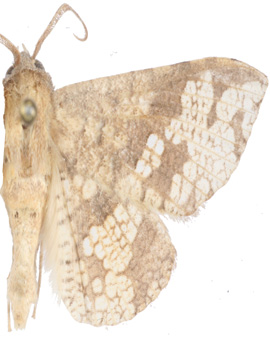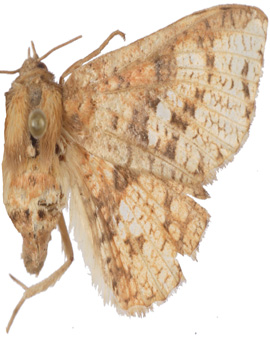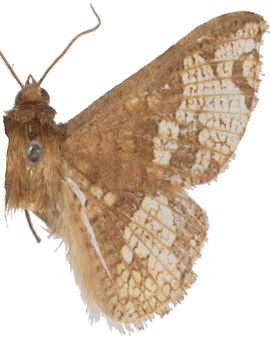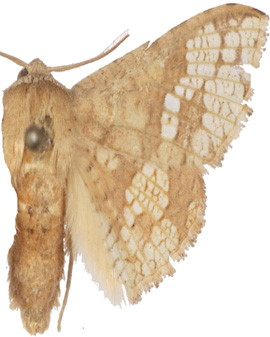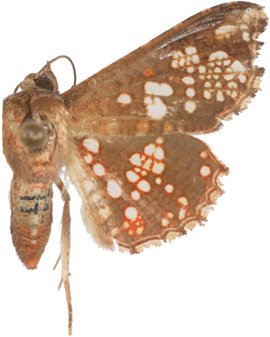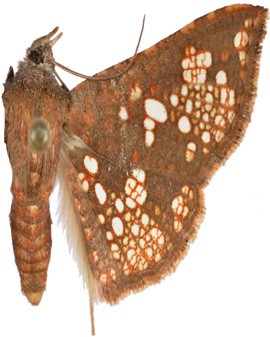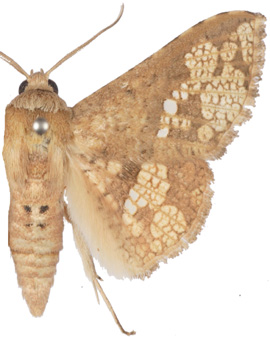Scientific classification
Animalia > Arthropoda > Insecta > Lepidoptera > Ditrysia > Thyridoidea > Thyrididae > Striglininae > Canaea
Genus Canaea Walker, [1863] 1864 sensu Whalley, 1971b
Type species: semitessellata Walker [1863] 1864: 73] (Canaea).
Syn. Pthina Chu & Wang (1991: 340, 346).
The genus Canaea Walker [1863] 1864 was removed from synonymy with Rhodoneura (Guenée) by Whalley (1964) and the genus was redefined and revised by Whalley (1971b). He divided the genus into two groups, based on characteristics of the male antennae: the ‘hyospila’ group (pectinate antennae) and the ‘plagiata' group (simple, minutely ciliate) containing only Canaea plagiata (Warren, 1897:382) and C. semitessalalis (Walker, [1866] 1865).
Generic description: The antennae are simple, bipectinate or monopectinate. Chaetosemata are absent as are interfacetal hairs on the eyes. Ocelli absent. The fore tibiae have an epiphysis. The hind tibiae have two pairs of spurs and the hind tarsi each have a pair of apical spines. In the FW the veins R2 and R5 usually arise from the cell with some R veins running very close together. Sc+R1 and Rs approach very closely on the HW but do not join. The male genitalia show modification of the socii, and the uncus is often modified too, being clavate or having a strongly sclerotised process near the base of the valve, or a very elongate sclerotized sacculus process near the base of the valve costa. The females have an ostium. There is a secondary sac on the bursa and strongly spined and sclerotized anal papillae (Whalley 1971b).
Whalley (1971b: 64) gives a key to species based on genitalic and other characteristics of males.
Canaea is a genus of medium sized moths with about 20 species, more than five in SE Asia, distributed from China through S.E. Asia to Australia and most richly represented in New Guinea (Whalley 1971b, RTS:128). Most species have red-brown or orange-brown wings with patchy areas of paler fenestration especially on the outer part of the wings. The distribution of these paler areas is usually sexually dimorphic.
RTS, p. 128 notes that the genus consists of two main groups with members being very similar and representing variations on a theme. One group includes C. semitessellata Walker [1864] 1863, C. simillella Whalley 1971, C. ignotalis (Röber, 1891), C. tessellatula (Pagenstecher, 1892) and C. ryukyuensis Inoue, 1965 (from Japan) which are larger paler yellowish or orange brown species.
The other group (which genitalic examination may prove non-congeneric) consists of smaller, darker, red-brown morphotypes including Canaea spp. 1 & 2.
There is usually sexual dimorphism in the first group with the females having larger pale fenestrate areas on the outer wings and a slightly different colouration. The males of many of this group of species are very similar and they are best identified by their genitalia.

